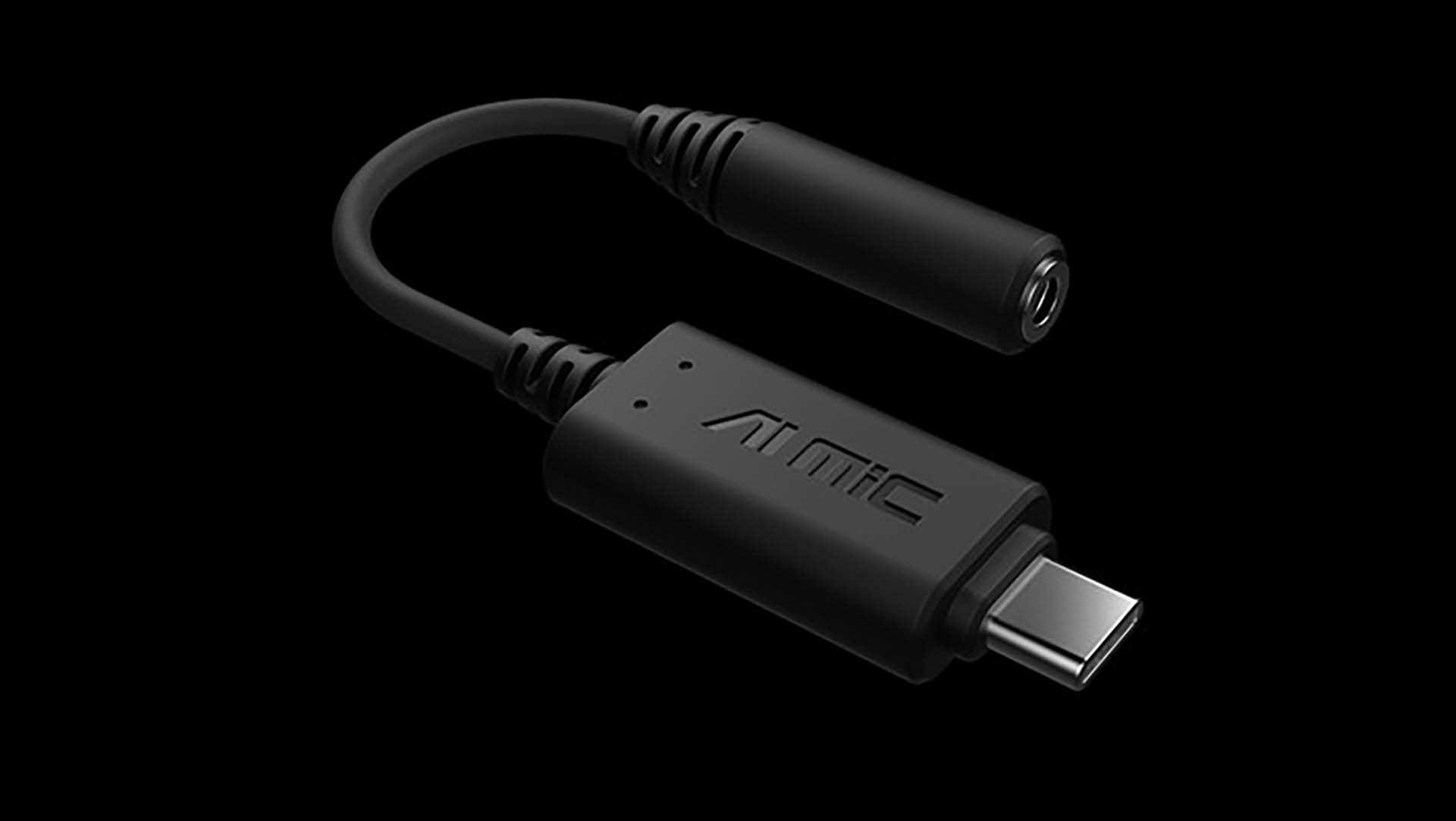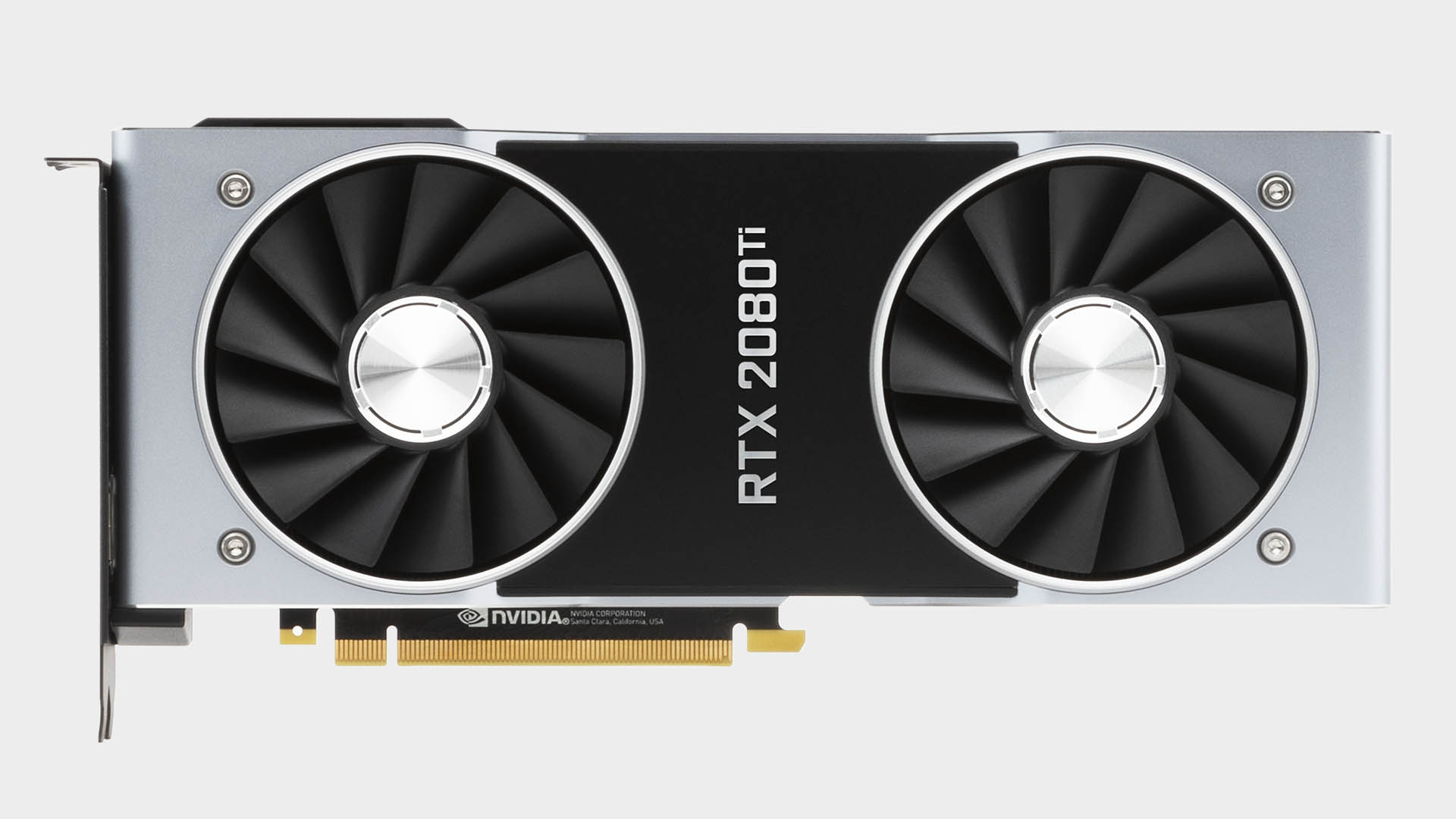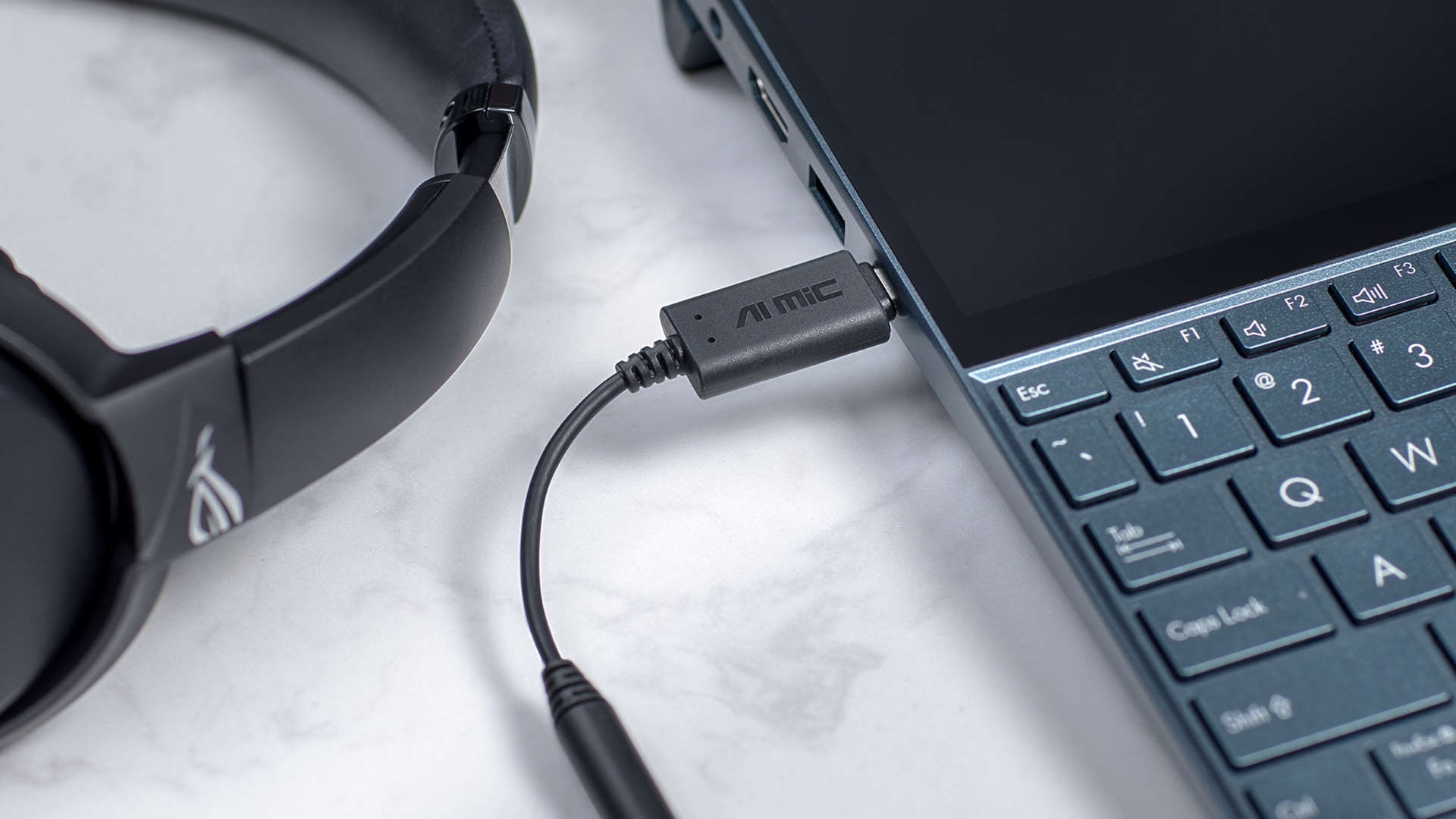Our Verdict
The Asus AI Noise-Cancelling Mic Adapter delivers plug and play noise-cancelling in a standalone and compact package.
For
- Great noise reduction
- Multi-device support
- No CPU/GPU utilisation
Against
- Not as clear as RTX Voice
- Free software alternatives
PC Gamer's got your back
Whether you want to call it AI or just half-decent software, noise-cancelling claiming to be augmented by machine learning is all the rage right now. From Nvidia with RTX Voice to Discord with Krisp, it's obvious there's an appetite for clearer audio and less distractions over voice applications, especially while gaming. Perhaps that's why Asus has decided to also throw its hat in the ring with the Asus AI Noise-Cancelling Mic Adapter.
Connector: USB Type-C, 3.5mm headphone
Dimensions: 1.8 x 0.8 x 13.5mm
Weight: 8g
Output rate: up to 44.1KHz
Input rate: 48/44.1KHz
Price: £40
It's a relatively straightforward device. Just 13cm in length, the mic adapter is comprised of a 3.5mm jack on one side and a USB Type-C connection on the other. In order to get it working, you simple plug your device in—be that a PC, laptop, or mobile phone—using the USB port. Then, you grab a 3.5mm wired gaming headset and plug it into the jack.
The dongle takes care of everything else. Any noise-cancelling is exclusively applied to the microphone input, and not the playback device. A built-in 24-bit DAC delivers output audio to your ears, whether that be a game of COD Warzone or a conference call, while the embedded chipset takes your microphone audio input and clears it up using the magic of AI.
So how does the Asus AI Microphone Adapter sound? The best way for you to experience the noise-cancelling qualities of the dongle is by being on the receiving end of someone using it. Lucky for you, we've put together a video that does just that, which you can find below or on the PC Gamer YouTube channel. In which, we try to best Asus' AI with a ukelele, pub sounds, a hoover, and a coffee grinder.
If you're unable to watch that back, or don't fancy a rare glimpse of my kitchen, then I'll distill it down to basics for you right here: better than nothing, worse than Nvidia RTX Voice, and still rather impressive.
While Asus' dongle may fall behind RTX Voice at times, that's usually only under extreme duress. That is to say, when I'm holding a hoover up to my face for as long as I can stand the stink. That's not a real-life situation I can honestly say I end up in a lot, especially not one when I'm worried about whether my friends can hear me over Discord. For most low-decibel background noise, the AI dongle works exceptionally well with minimal voice clarity loss.
And that's pretty great considering the AI dongle doesn't require any of your PC's valuable resources in order to operate. As entirely standalone kit, you won't see CPU or GPU utilisation due to its running. That's unlike RTX Voice, the AI noise-cancelling software now bundled with RTX GPUs (and others with a handy workaround). The green team's app will see increased load on your PC, and while minimal, I still prefer none at all.
There's also the added benefit of multi-device use. RTX Voice is significantly limited in function by its prerequisite (and unnecessary), GPU support, whereas the Asus dongle is multi-device—especially once you factor in the included USB Type-C to USB Type-A adapter. It even doubles up as a USB Type-C to 3.5mm jack adapter for those of us using a mobile phone sans headphone port.
It's worth noting that Krisp, a software based AI noise-cancelling app, the same one integrated into Discord, is available across device, so can offer an alternative if you're not fussed on hardware. But once again this relies on your own device to run, as opposed to dedicated hardware.


This is how you enable RTX Voice on any Nvidia graphics card, and why you should.
The only major downside to the Asus dongle is you need to actually buy the thing. Krisp is free for two hours per week, while RTX Voice is ostensibly a free download so long as you already have the hardware to run it. The Asus AI Noise-Cancelling Mic Adapter will set you back £40 here in the UK, and I'm still tracking down availability and pricing in the US.
At least Asus also offers its AI sound-busting tech within two headsets: the ROG Strix Go 2.4 and ROG Strix Go—and I'm sure we'll see it burst onto the gaming scene from there.
So is the ASUS AI dongle your best bet for clean audio output? Well, that all depends on where you plan on using it. Even the smartest AI appears to struggle to discern you from the whirring of a dusty motor, but, then again, how often do you find yourself gaming for an extended period of time next to an operational vacuum cleaner. Hopefully not often, which should leave your audio relatively unimpeded by AI clean-up.
What this diminutive dongle delivers over the competition is portability and flexibility across devices, operating systems, and hardware. It's also a handy alternative if you're not rocking an Nvidia RTX graphics or don't fancy loading your PC up with any extra software.
The Asus AI Noise-Cancelling Mic Adapter delivers plug and play noise-cancelling in a standalone and compact package.

Jacob earned his first byline writing for his own tech blog. From there, he graduated to professionally breaking things as hardware writer at PCGamesN, and would go on to run the team as hardware editor. He joined PC Gamer's top staff as senior hardware editor before becoming managing editor of the hardware team, and you'll now find him reporting on the latest developments in the technology and gaming industries and testing the newest PC components.


